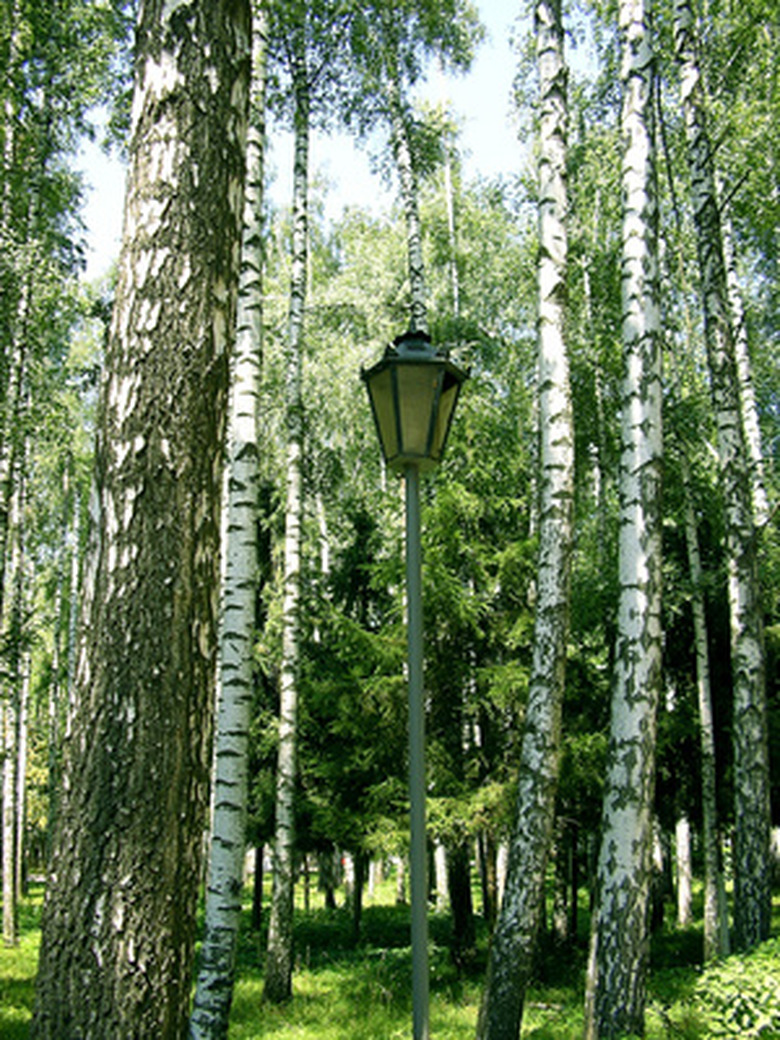Spacing For Birch Trees
Tip
White pine is an excellent companion planting for birch. Not only does it set off fall colors and white bark beautifully, but a stand of them can provide the same shelter from wind and sun as a building.
Warning
Don't forget to look up when planting a birch tree. You don't want to plant a birch under power lines, only to have to cut it down five years later.
Birches can be finicky. They are shallow-rooting trees that need cool, moist, shaded soil, yet their canopies need plenty of sun. Birches are notoriously vulnerable to bark injury, disease and insects that bore. Birches do best when planted on the north- or east-facing sides of buildings, where they can get full sun in the morning and some shade during late afternoons and early evenings. Spacing them in the landscape depends on how much work you want to do.
Step 1
Know what species of birch you are planting. Keep in mind that paper, silver and river birch can grow 40 to 60 feet high, with a spread of 20 to 25 feet, while weeping birch will only get half that tall. Plant taller species 20 to 30 feet apart.
Step 2
Plant young birches in clumps 6 to 10 feet apart to form a stunning grove or stand. As they grow, you will have to prune their canopies to keep branches from tangling and rubbing together, causing injury and entry points for insects and disease.
Step 3
Look carefully at the form of the birches you plant. If it has a double trunk, it will need extra room for a double canopy. Try to predict their spread at maturity to space them properly.
Step 4
Plant weeping birch varieties singly because they are extremely vulnerable to bark injury from other branches rubbing against them. Wounds in bark will attract insects and disease, weakening the tree. Planting them in groups diminishes their visual impact.
